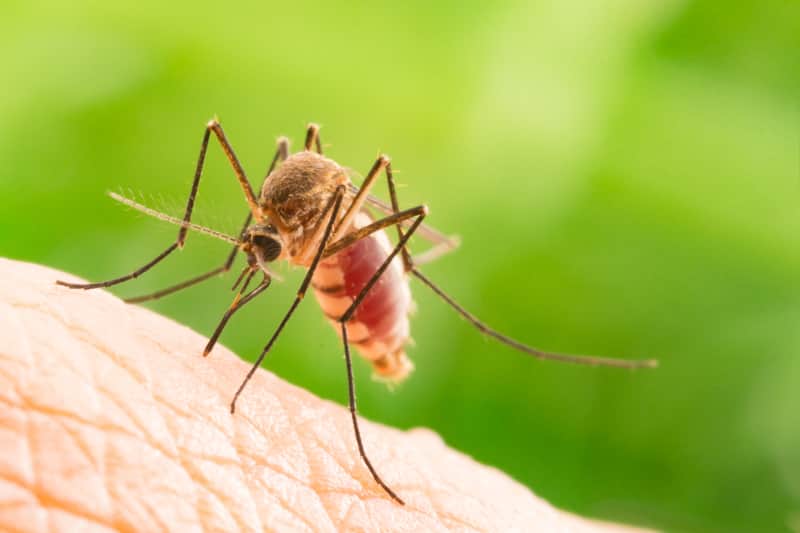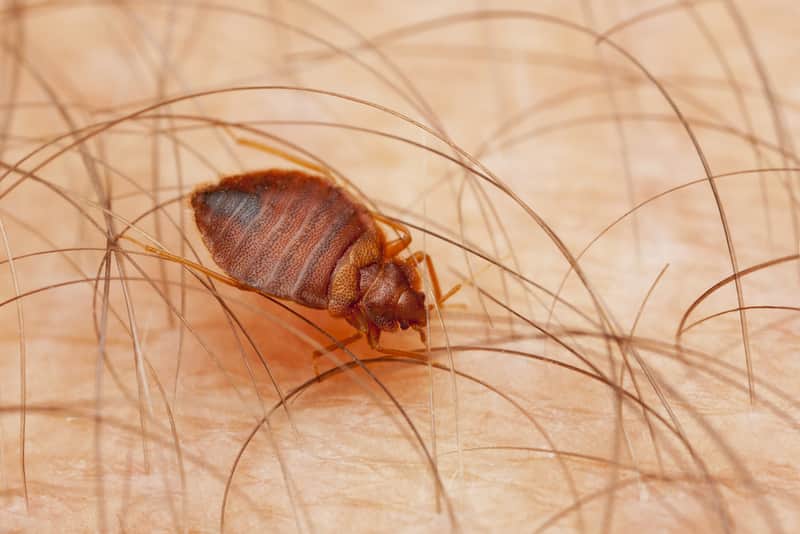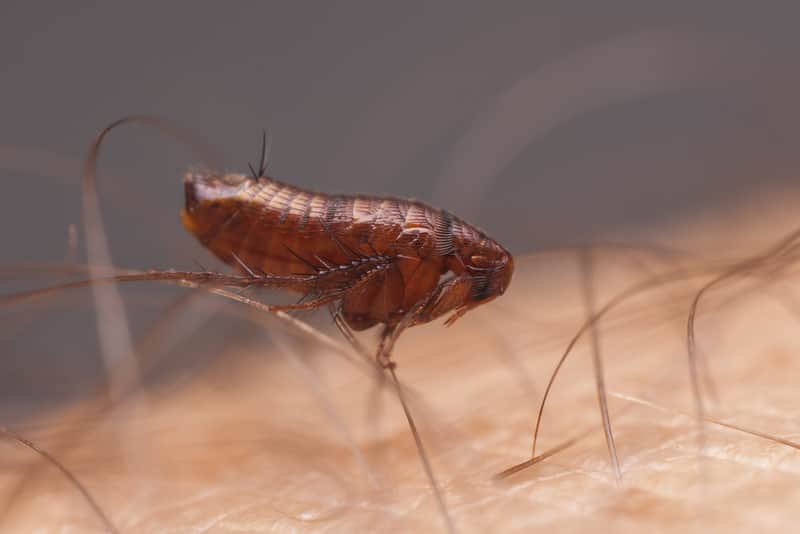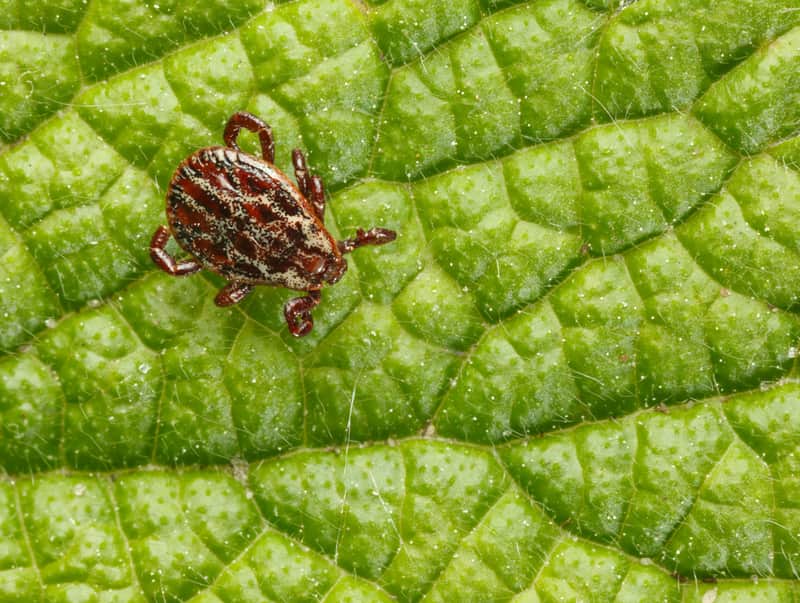Vampires are all around us — in the form of insects. Blood-sucking bugs, or bugs that feed on human blood, are parasites that often prefer warm-blooded, mammalian hosts, including people and their pets. For some people, the bites of these insects that feed on blood can leave behind itchy and irritating marks. Worse, some can transmit disease pathogens. But which insects that feed on blood should you watch out for? The following pests are ectoparasites (live on the outside of their host) that should be at the top of your list.

Mosquitoes
Adult mosquitoes are small, long-legged flying insects with hairy wings and extended mouthparts. Female mosquitoes use these needle-like mouthparts to puncture their victim's skin and feed on their blood. Female mosquitoes need a protein-rich meal for their eggs to develop. Male mosquitoes don’t bite because they don’t feed on blood at all. While getting their protein from their victim's blood, the mosquito injects saliva-containing anticoagulants that keep the blood from clotting.
Because mosquitoes feed on blood from multiple hosts, they can pick up some types of disease pathogens from one infected individual (animal or human) and transmit them to another one. Mosquitoes are known vectors of several diseases, including malaria, West Nile virus, eastern equine encephalitis and canine heartworm disease (which affects dogs only).
To help control mosquitoes, eliminate standing water in your yard to deny them breeding sites. Be sure your doors, windows and their accompanying screens fit tightly, keeping them closed during peak mosquito activity from dusk to dawn. You can also contact a mosquito control professional.

Bed Bugs
Bed bugs are tiny, reddish-brown insects with flattened (unless they have recently fed), oval bodies. They typically hide in cracks and crevices during the day. Bed bugs are nocturnal, emerging at night to feed on blood. Sleeping individuals are easy prey for bed bugs, as they are likely going to be the first warm-blooded bodies the bed bugs will encounter.
Bed bugs use a piercing sucking mouthpart to feed on blood, and their bodies become swollen and dull red after their meals. Bed bug bites, which look similar to mosquito or flea bites, can appear on some people. If you think you have bed bug bites, you should seek professional medical care.
There are other signs to look for other than bites. And bed bugs are notoriously difficult to control. That's why, if you suspect bed bugs in your home, we recommend that you contact a bed bug control professional for help.
Fleas

Fleas are reddish-brown, wingless blood-feeding insects with jumping abilities. Adult fleas must feed on blood, and some species require blood to reproduce.
Fleas usually live and breed near pet beds and other pet resting places. If you have fleas in your home, they may feed on your blood as well as your pets’ (some species prefer pets over people). Fleas usually bite your ankles and the lower parts of your legs. Even a single flea bite to a hypersensitive person or animal can cause intense itching and irritation.
To help get rid of fleas inside your house, wash or replace all pet bedding. Note: Refer to your materials’ manufacturer’s instructions before washing. To help get rid of flea eggs, larvae and pupae, vacuum areas where pets sleep, the edges of rooms and under furniture and throw rugs. There are different phases of flea control. One is the environment, which Terminix can help with. The other is your pet, which you should consult your veterinarian about.
Ticks

Ticks are not insects, but are actually arachnids. Their closest cousins are spiders and scorpions. But they are significant blood-feeding ectoparasites, several species of which frequently take human beings for their hosts. Also, ticks don't just bite once and then depart. They attach themselves to their host and feed until they are full. That can take several days, and, in the process, the tick will enlarge. An adult tick with eggs can actually grow many times larger than its size.
The deer tick (also known as the black-legged tick) can be found in developed areas. Adult deer ticks are dark brown or black with a lighter-colored abdomen and eight legs. To locate a host, deer ticks practice a behavior known as "questing." While questing, a deer tick will move toward high ground — for example, the top of a blade of grass or the end of a branch — and wait with its forelegs outstretched for a potential victim to pass by. If you've been out hiking or camping in brushy or densely wooded areas, it's always a good idea to perform a tick inspection upon returning home.
There are several tick species that can spread the pathogen that may cause Lyme disease, including the deer tick in the Northeast and the western blacklegged tick in the western U.S.
The best protection against ticks is to help prevent them from successfully completing their quest for a host. If you know you are going to be outdoors for an extended period, be sure to wear long-sleeved shirts, long pants, socks that cover your ankles and a hat.
Have any of these insects that feed on blood decided to make your home their home? Call Terminix® today and find out how you can protect your family and your pets from these pests.


